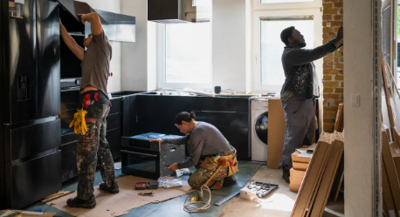
Home renovation isn’t just a way to turn any old house into your dream home—it’s also an opportunity to update its overall structure so that it’s a more pleasing and comfortable place to live.
That said, remodelling your house can be quite an expensive endeavour, and if you don’t plan properly, you may rack up a ton of costs that are outside your budget. While many dream of bringing grand designs to life, not many will have the deep pockets required to achieve such That’s why it’s important to know what to prioritise for your home improvement projects. This way, you can get the necessary work done first to serve as a foundation for optional upgrades later. Here’s a simple checklist of what you should prioritise first during house renovations to make the most out of a limited budget.
1. Demolish Unneeded Spaces and Restructure Rooms as Necessary
Before you begin renovating, you’ll need to decide if you’re content with the overall structure of your home or if you want to make some changes. Sticking with it as it is can save you some money, but if you want to follow a specific plan, then restructuring your home should be at the very top of your priorities.
Make sure you know exactly what you want before contacting builders Dunedin homeowners trust to remodel your house. How many rooms do you need, and how large should each one be? How can you apply your vision to the home you already have? From there, you can discuss your non-negotiables with your team of builders so that they can start demolishing any unneeded spaces and creating expansions as necessary.
2. Address any Structural Issues
Whether you decide to demolish or expand parts of your home or not, it’s important to address any structural issues it may have to ensure that it’s a safe and durable place to live. Look for any roof leaks, foundational issues, and other weaknesses in your house that could lead to safety hazards in the long run. Also, make sure that it's built to withstand strong weather changes or natural calamities, such as storms, earthquakes, or cyclones.
3. Check The Home’s Utilities
Your utilities are what turn your home from a simple space to one that is liveable and comfortable for you and your family. These include the house’s electrical work, water and sewer lines, and gas lines. It’s crucial to double-check all of these elements to ensure that there are no faults or issues.
For example, faulty electrical wiring can turn into a potential fire hazard. Plumbing leaks can cause mould that can be dangerous to your household’s health, as well as cause water damage to the house’s structure itself. Damaged gas lines could potentially cause a gas leak, which could result in fires or gas poisoning. Finally, damaged sewer lines can create various issues—mould and bacteria growth, pest infestations, structural issues, and more—that could be dangerous for people’s health and safety. Make sure to check and replace utility lines as needed to prevent future problems.
4. Improve Kitchen and Bathroom Functionality
The kitchen and bathroom are undoubtedly two of the most important rooms to consider during home renovation. First, inspect your kitchen’s appliances to see if they need replacing. Old appliances can be replaced with updated models that combine style and practical features like improved energy efficiency. Also consider replacing old counters, improving storage, and creating a more efficient layout to make the kitchen easier to work in.
As for the bathroom, see if the main fixtures need replacing. This typically includes the toilet, shower, and sink, as well as the bathtub if your bathroom has one. Many modern bathroom fixtures also boast new features, such as toilets with elaborate flushing systems or showers with water-saving functionality. This is the perfect opportunity to upgrade your bathroom into your very own personal spa.
5. Simple Aesthetic Improvements
Now that you’ve gotten all of the essentials out of the way, you can start focusing on the overall style of your home. Use the remainder of your budget on improving the aesthetics of your house and shaping it into the design you’ve always envisioned. Even if you don’t have a lot of funds remaining to completely transform your home, simple aesthetic changes can still give it new life. A new coat of paint, for example, can make a huge difference and give the space a new look.
Prioritise The Essential Renovations Over Your Home’s Complete Makeover
Working with a limited budget means you’ll have to compromise on a few aspects of your house renovations. However, your and your family’s safety and comfort should always be prioritised above all else. Once the essential renovations are done, you can start saving money again for a second round of changes, this time to make it look like the home of your dreams.


(0) comments
We welcome your comments
Log In
Post a comment as Guest
Keep it Clean. Please avoid obscene, vulgar, lewd, racist or sexually-oriented language.
PLEASE TURN OFF YOUR CAPS LOCK.
Don't Threaten. Threats of harming another person will not be tolerated.
Be Truthful. Don't knowingly lie about anyone or anything.
Be Nice. No racism, sexism or any sort of -ism that is degrading to another person.
Be Proactive. Use the 'Report' link on each comment to let us know of abusive posts.
Share with Us. We'd love to hear eyewitness accounts, the history behind an article.